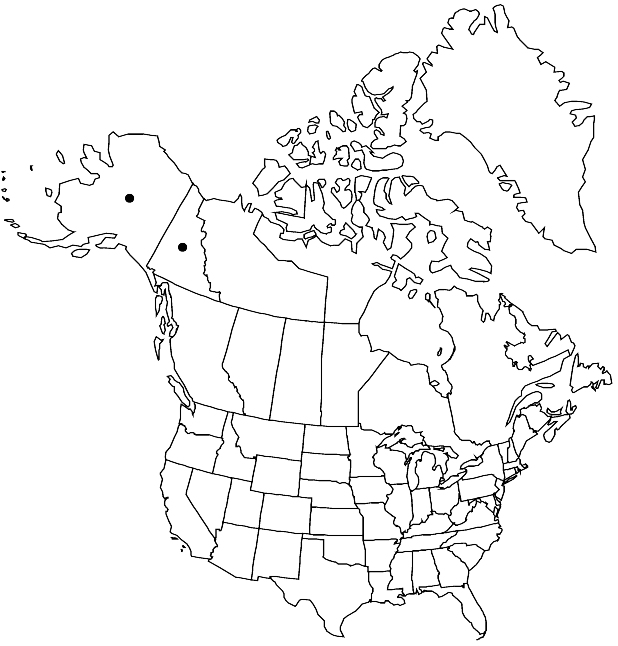Noccaea arctica
Preslia 70: 107. 1998.
Perennials; (with persistent petiolar remains). Stems simple or several from caudex, erect, unbranched, 0.5–1.8 dm. Basal leaves: petiole 0.4–1.3 cm; blade oblanceolate to spatulate, 0.3–1.8 cm × 2–4 mm, base cuneate or attenuate, margins entire, apex obtuse. Cauline leaves 3–7; blade ovate or suboblong, 0.5–1 cm × 1–5 mm, base minutely auriculate, margins entire, apex obtuse to subacute. Racemes 0.5–6 cm. Fruiting pedicels ascending to horizontal, straight, 3–8 mm. Flowers: sepals 1.5–2.5 × 0.5–1 mm, (margins white); petals white, 3–5 × 2–2.5 mm, often flaring between blade and claw, apex rounded; filaments 2–3 mm; anthers ca. 0.5 mm. Fruits not winged, narrowly obovate, 6–10 × 2–3.5 mm, base cuneate, apex obtuse; ovules 8–14 per ovary; style (0.3–) 0.6–1 mm. Seeds yellowbrown, 1.5–2 mm, nearly smooth. 2n = 14.
Phenology: Flowering Jun–Aug.
Habitat: Dry tundra ridges, arctic coast
Elevation: 0-500 m
Discussion
Noccaea arctica is rare, known from a limited number of collections. P. K. Holmgren (1971) suggested that additional collections might indicate that it is a variety of N. fendleri (as Thlaspi montanum).
Selected References
None.
Lower Taxa
"elongated" is not a number."thick" is not a number."dm" is not declared as a valid unit of measurement for this property.
